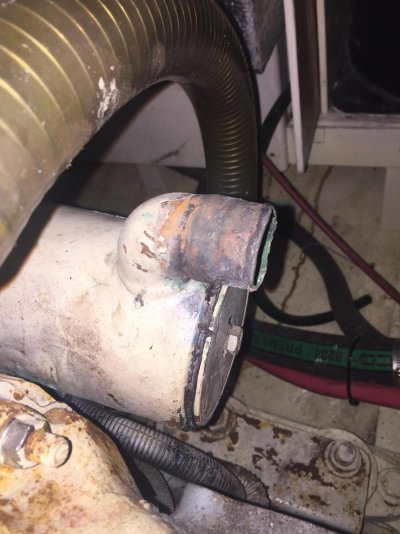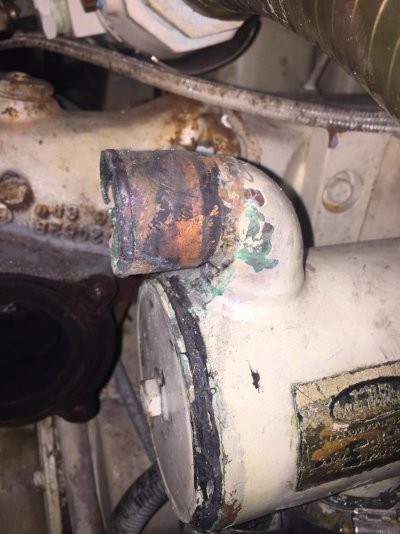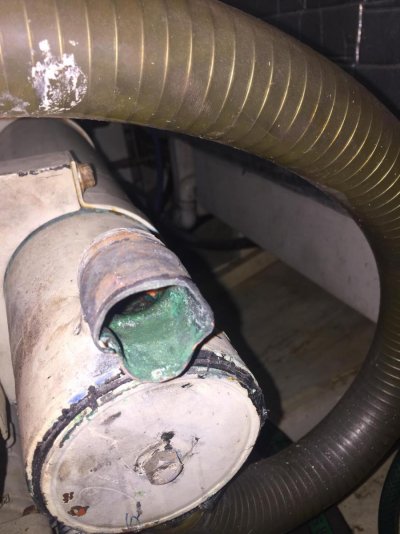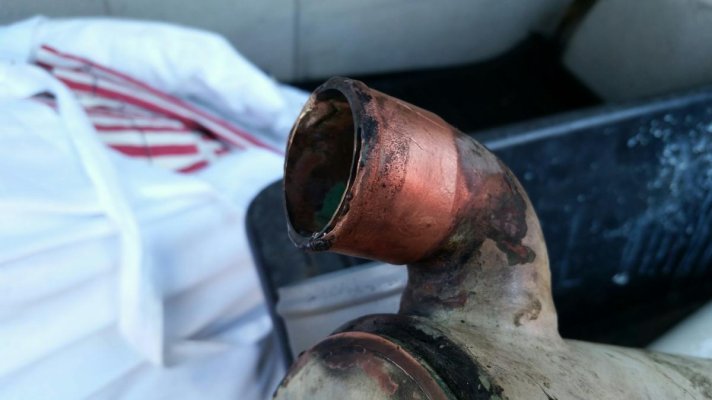I have a standard Sen-dure HX on my Cummins 6BTA's. It is cupro-nickel and the raw water sockets (the In and Out barbed hose connectors) appear to be made of the same copper-rich material.
One of my raw water sockets has badly corroded at its lip (see photos below) and I want to get it repaired before I re-install the raw water hose that runs off this socket to a wet exhaust elbow.
I'd appreciate the advice of TF members as to the best repair technique. Rather than just show up with the HX to the local radiator shop & hand it over, if a particular repair approach is preferred I'd like to find a shop with experience in that technique. I understand that brazing with bronze 'filler' may be one option; and that TIG welding with a special welding rod might be another. Also that the HX casing itself needs to be heat-protected during the operation to avoid damage to the tube bundle inside.
Of course, if I'm over-thinking this and it is a job any local radiator shop does every day...please tell me that too! I have absolutely no machine-shop knowledge...as many will have already recognized!
One of my raw water sockets has badly corroded at its lip (see photos below) and I want to get it repaired before I re-install the raw water hose that runs off this socket to a wet exhaust elbow.
I'd appreciate the advice of TF members as to the best repair technique. Rather than just show up with the HX to the local radiator shop & hand it over, if a particular repair approach is preferred I'd like to find a shop with experience in that technique. I understand that brazing with bronze 'filler' may be one option; and that TIG welding with a special welding rod might be another. Also that the HX casing itself needs to be heat-protected during the operation to avoid damage to the tube bundle inside.
Of course, if I'm over-thinking this and it is a job any local radiator shop does every day...please tell me that too! I have absolutely no machine-shop knowledge...as many will have already recognized!
Attachments
Last edited:




